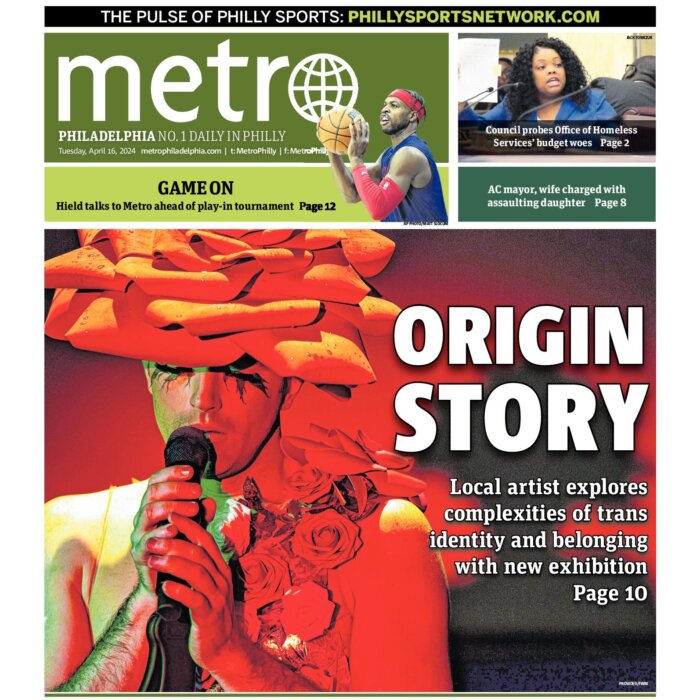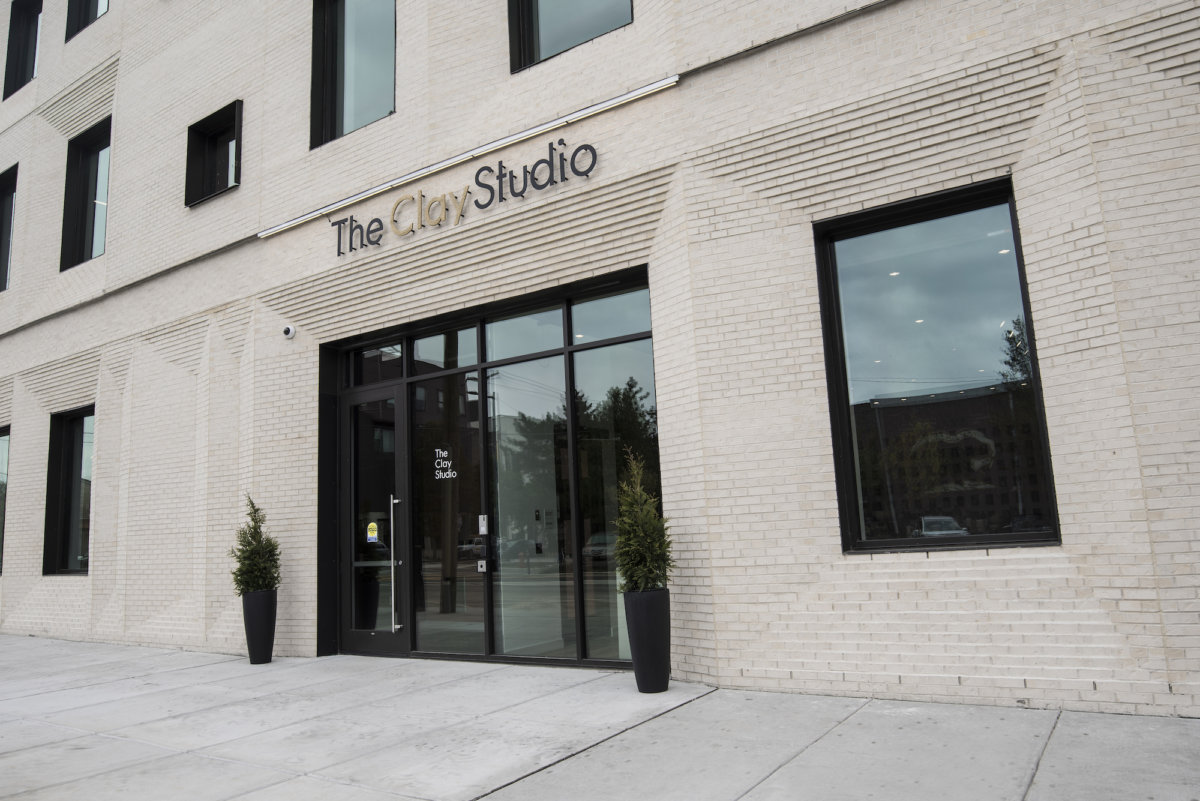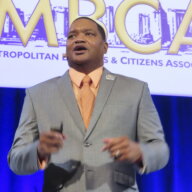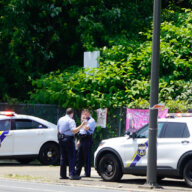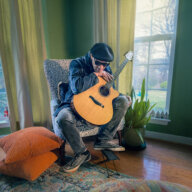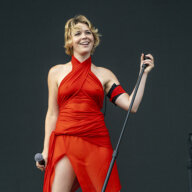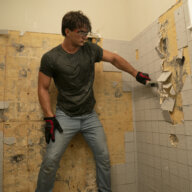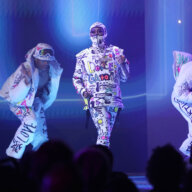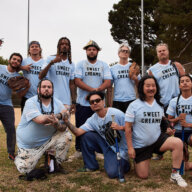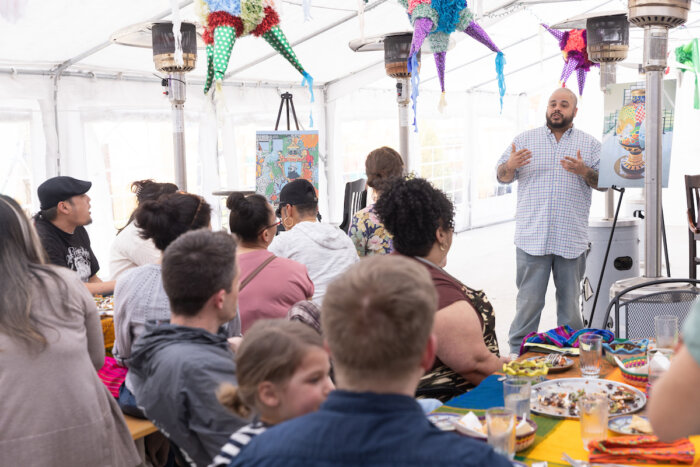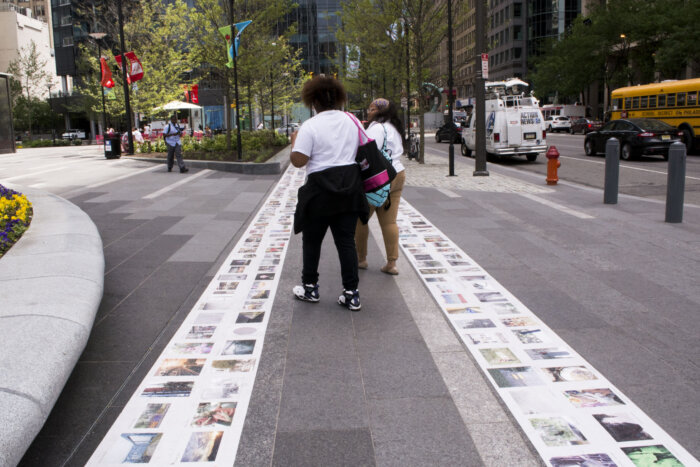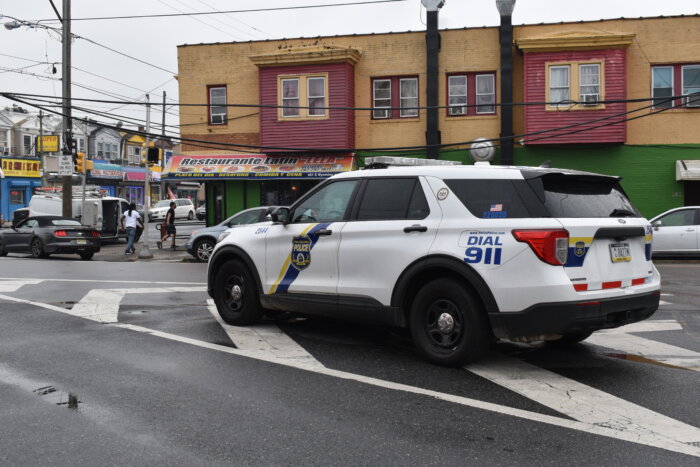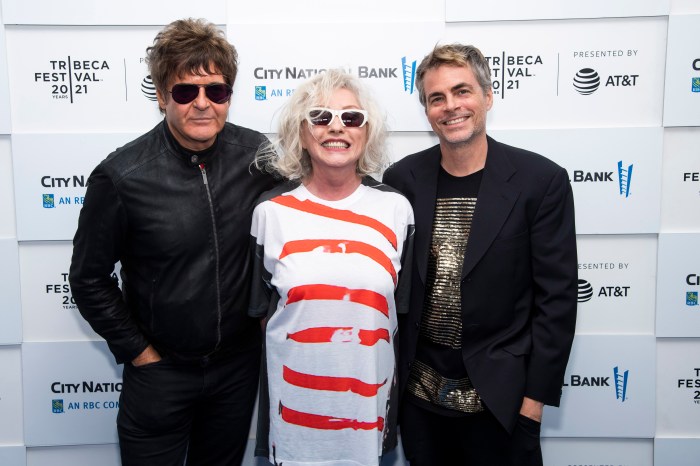To go with the Clay Studio’s new $14.5 million, state-of-the-art, 34,000-square-foot home on American Street in South Kensington, the ceramic arts facility is wasting no time in making its mark as an exhibitor with “Making Place Matter.”
Opening April 23, dedicated to the complex meanings of place in contemporary conversation with clay and cultural heritage as sources of inspiration, “Making Place Matter” stars Philly-based Peruvian-born artist Kukuli Velarde, American-born, Massachusetts-based artist Molly Hatch, and Egyptian-American artist Ibrahim Said leaning into matters of personal history with social justice as their guide.
Velarde’s A Mi Vida project includes sculptural installations, painting, and a performance during June 4’s free symposium at the C-Studio where Velarde will walk from her nearby home to the Studio with one of her sculptures, A Mi Vida, in a stroller. There, she’ll pass the sculpture to attendees to signify how holding a precious, fragile work of art relates to holding a child, empowering all with the responsibility of protecting and caring for children.
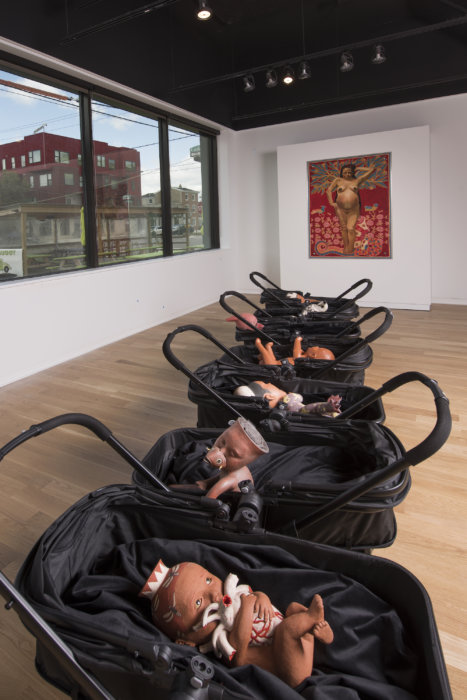
“Each piece in this work sports my daughter’s features when she was six,” states Velarde, who got pregnant at 48 and gave birth to her daughter, Vida. “The idea of creating intimate works sprouted from my surrendering to parental love and being resigned to the emotional pain that will come when her world shifts away from ours when she grows.”
That said, A Mi Vida is not just about a mother and the natural, unavoidable separation from her offspring, and the feelings the process provokes. The project explores separation within the frame of our political landscape.
“The pain, a thousand times greater, that must overcome a parent and a child when separated by force,” she notes. “The project raises awareness about the difficult times immigrants of color are facing today, from the perspective of an emotional bond abruptly torn. Each piece becomes a symbolic representation of every immigrant child out there, isolated and scared, trapped in federal detention centers throughout the country; a denunciation of the outrageous treatment of innocent lives, and it is an urgent request for empathy and protection against the pain of imposed separation. My terracotta pieces of pre-Columbian inspiration are meant to symbolize immigrant children… heavy, delicate, and valuable, as the life of any child should be.”
Creating in the tradition of his father’s work in Egyptian pottery, Said’s lattice-like geometrical piece is inspired by Islamic mashrabiya (an architectural screen merging decoration and function), the heritage and folklore of Egypt, and the artist’s love of clay.
“My connection to clay is grounded in Egypt’s history of ceramics, and my work embraces the elegance and simplicity of color and clay bodies, playing with earthiness, sheen, and light, both in the sense of weightlessness and luminosity,” says Said.
In consideration of the topicality of “Making Place Matter,” Said pushed the limits of his medium, challenging the structural integrity of clay.
“This exhibition opportunity cultivated and carved out a psychological space to focus in a heightened way on just a few visual relationships,” says the artist. “Justice in this context is about equal footing, equal visibility, in public spaces. I rarely feel seen or represented culturally in the spaces I occupy. Hopefully by exhibiting ideas and imagery rooted in the Islamic world, the attending audience gains insight and appreciation for the beauty of another culture regardless of faith or politics. Or maybe they will see a part of themselves represented — maybe for the first time.”
Born the daughter of painters and organic dairy farmers, Hatch’s childhood was divided between physical labor, play and creating art with a future dedicated to the physicality and meaning of ceramic forms with painterly surfaces.
“I have evolved my studio practice to include a broad catalog of dimensional ceramic forms to create dynamic sculptural paintings,” she says. “Informed by inherited objects and legacy, my ceramic installations transform and deconstruct traditional patterns and motifs sourced from the history of decorative arts and painting. I digitally alter historic imagery through shifts in color, scale, and composition.
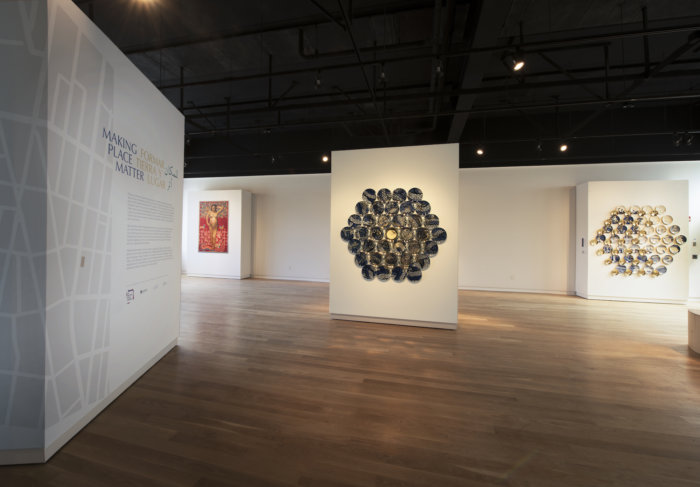
“Creating access to art through our universal familiarity with the domestic plate, a perceptual shift occurs when viewing plates on the wall as one would view a painting. I work to create a visual gateway for the viewer to rethink preconceptions around hierarchies of art, abstraction, formality, history, and class. Activating our collective history, working towards inclusive accessibility to art and challenging perceptions of contemporary ceramics are major motivators for my artistic practice.”
Hatch’s slip cast porcelain ‘discs’ used in Linea, protrude from the wall to create a visual push and pull between two-dimensions and three-dimensions. When one activates the sculptural nature of the work by moving around the installation, additional painted surfaces are revealed on the sides of the ‘discs.’
“Ultimately, my artworks explore images and forms describing my cultural identity and the layers of cultural histories that surround us as members of contemporary society,” notes Hatch of its relation to all things socially just. “I’m committed to hand-painting each work I make, the contemplative and almost meditative process of completing the work by hand allows me to sit with the historic source imagery and immerse myself in the composition and process of making.”
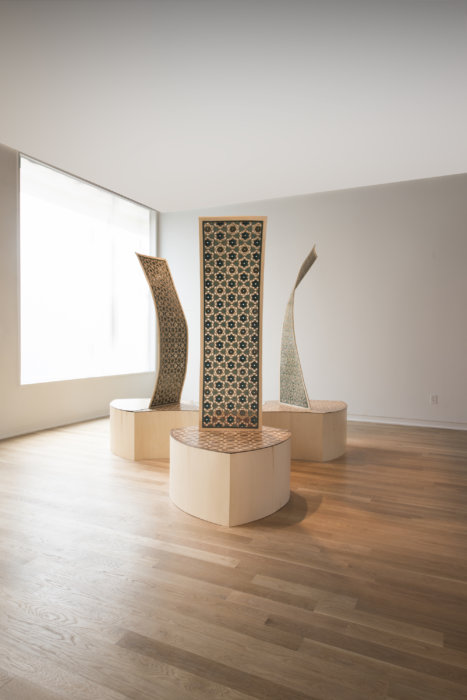
As far as making her patterns engage in an abstract conversation that bring together the past into the present and hopefully into the future, Hatch says that referencing historic source imagery and patterning, her work evokes a sense of familiarity that encourages the viewer to spend time with the work and gives permission to the viewer to access the work.
“By abstracting and re-contextualizing the historic, often-familiar source imagery becomes something new,” says Hatch. “In much of the work made for ‘Making Place Matter’, I chose to reflect the viewer in the work through my use of the reflective metallic surface of gold luster. The past collides with the present and the future through this reflective surface. My intention is that the viewer see themselves as a part of our collective history.”
For information, visit theclaystudio.org/making-place-matter
